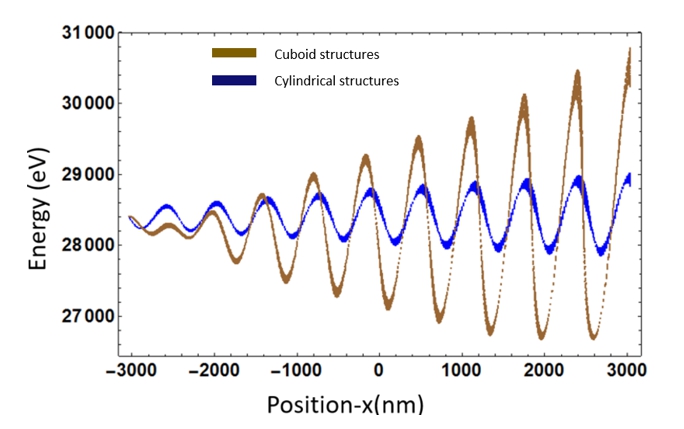Geometric optimization study for a Dielectric Laser Accelerator

At the University of Liverpool, LIV.DAT student Gyanendra Yadav works on Dielectric Laser Acceleration of relativistic beams, in close collaboration with Lancaster University, PSI Switzerland and ASTeC, and researches state-of-the-art opportunities that high-gradient accelerators provide.
In a paper recently been published in a special IOP journal issue about the 4th European Advanced Accelerator Concepts Workshop, Gyanendra Yadav and colleagues Javier Resta-López and Carsten Welsch, from the University of Liverpool/Cockcroft Institute, and Guoxing Xia, from the University of Manchester, have presented their work on geometric optimization for a Dielectric Laser Accelerator (DLA).
The rise in the semiconductor industry and the demand of compact devices from the medical sciences has led to the development of DLAs. These particle accelerators have already exhibited the potential to deliver particle physics on a tabletop setup in universities in a cost-efficient manner and can be miniaturised to exist on a chip. There is scope for the optimization of DLA components to prepare them for a wide range of applications.

Energies for two grating structures with a different geometry, in the non-relativistic regime of electron beam energy: there is an energy gain for cuboid structures when compared to cylindrical-shaped structures, (G. Yadav et al 2020 J. Phys.: Conf. Ser. 1596 012016).
The simulation study presented here, demonstrates the performance comparison of two different shaped grating structures under same grating, laser and electron beam parameters, encompassing the nonrelativistic and relativistic regimes of electron beam energies. As the core of a DLA, the grating structures play a pivotal role in the enhancement of energy gain and efficiency. The simulation results show that the structure which provided a higher energy gain and acceleration gradient was less efficient in terms of controlling the energy spread. The performance of the structures changed after switching to relativistic electron beam energy. This study emphasizes the importance of using a grating with a geometry suited to the experimental conditions and the user constraints for the output electron beam. It would be necessary to check the precision and difficulties in the manufacturing of these structures before seeking the experimental validation.
For this full 3-dimensional simulation, Particle in cell (PIC) Solver from CST code was used. Within the LIV.DAT framework, the team will further develop a code with larger parameter space manipulation which includes realistic emittance values, laser field equations and increase in the grating periodicity. To serve this purpose they will utilize the powerful supercomputing cluster Shaheen-II from KAUST, Saudi Arabia.
Further information:
G. Yadav et al, “Geometric optimization study for a Dielectric Laser Accelerator”, J. Phys.: Conf. Ser. 1596 012016, 2020
https://iopscience.iop.org/article/10.1088/1742-6596/1596/1/012016